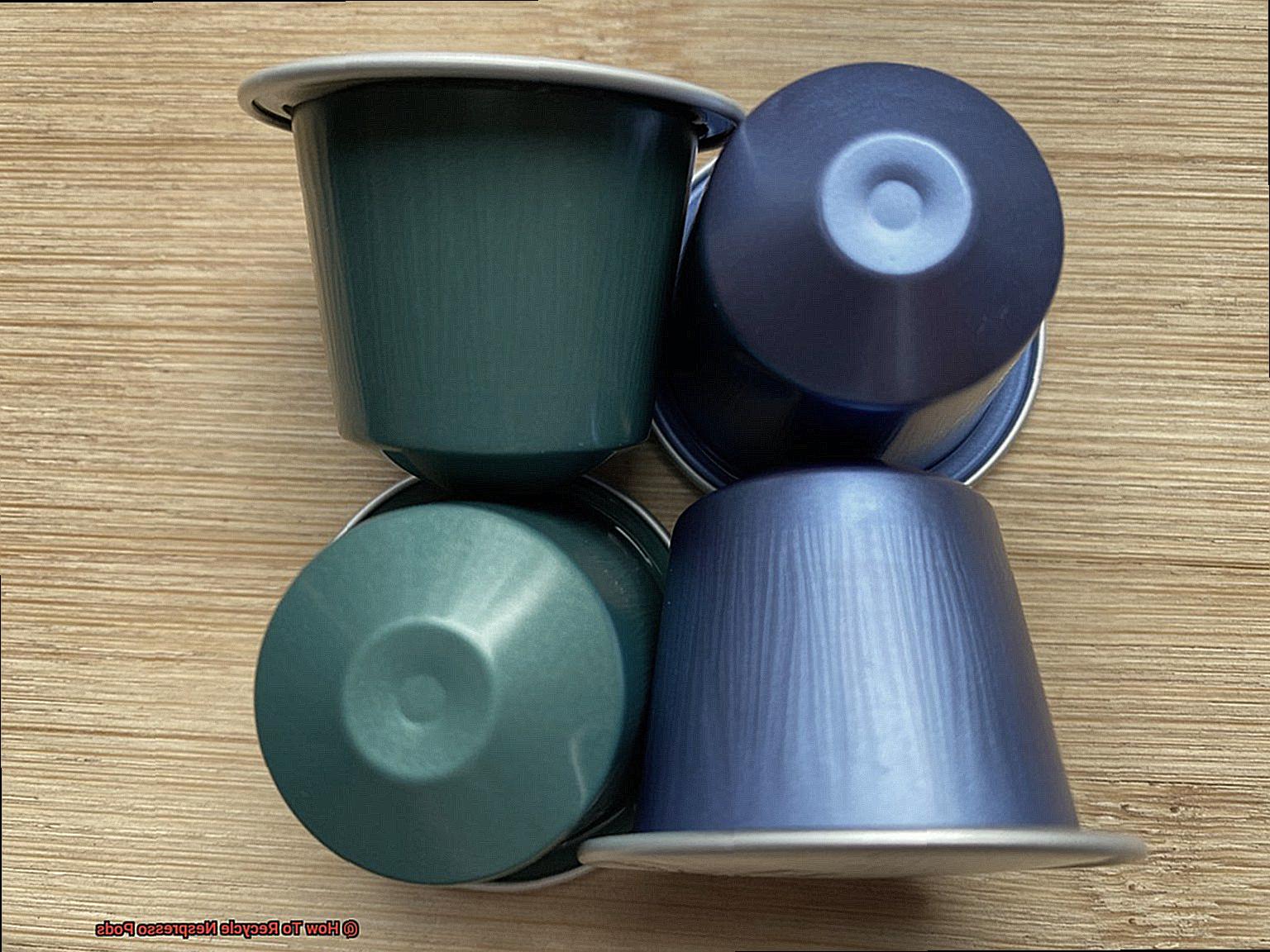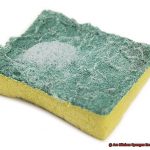Do you love your morning cup of coffee? Is it just right every time? If so, you might be wondering how to recycle those used Nespresso pods.
We’re here to help. Recycling Nespresso pods is easy and important for the planet.
Here’s what to do: empty any remaining coffee grounds, wipe away any grime with a damp cloth or paper towel, then put the pod in a designated collection bin or bag for recycling. Take them to a local recycling center or drop them off at a participating store that allows them to be recycled.
The used pods will be separated into different materials like aluminum and plastic – then recycled into fresh products. By taking the time to recycle your used Nespresso pods, you’re helping minimize waste and protecting our climate.
So don’t wait any longer – get recycling today.
The Benefits of Recycling Nespresso Pods
Contents
Recycling Nespresso pods is an easy, economical way to make a positive impact on the environment and contribute to a sustainable future.
Not only can you reduce landfill waste and conserve energy and resources, but you can also support sustainable farming practices and benefit from rewards such as cash or discounts on future purchases. By recycling your Nespresso pods, you’re conserving 95% more energy than if aluminum were produced from raw materials.
Plus, this helps cut down on greenhouse gas emissions that contribute to global warming. You can even join Nespresso’s compost program which works with farmers to turn used coffee grounds into compost for fertilizing coffee plants.
Nespresso also offers a free recycling service where customers can drop off their used pods at any Nespresso boutique or partner location. And many recycling programs offer incentives for reusing items like cash or discounts on future purchases, so it pays to recycle.
How to Recycle Nespresso Pods Through the Company’s Program
Sign Up for Nespresso’s Recycling Program
If you’re looking to reduce your environmental impact, signing up for Nespresso’s recycling program is the perfect way to start. All you have to do is visit their website and register for the service, and they will send you a free recycling bag as well as instructions on how to use it – all free of charge.
It’s an easy and convenient way to recycle your used pods without having to worry about the logistics of it.
Recycle at Home
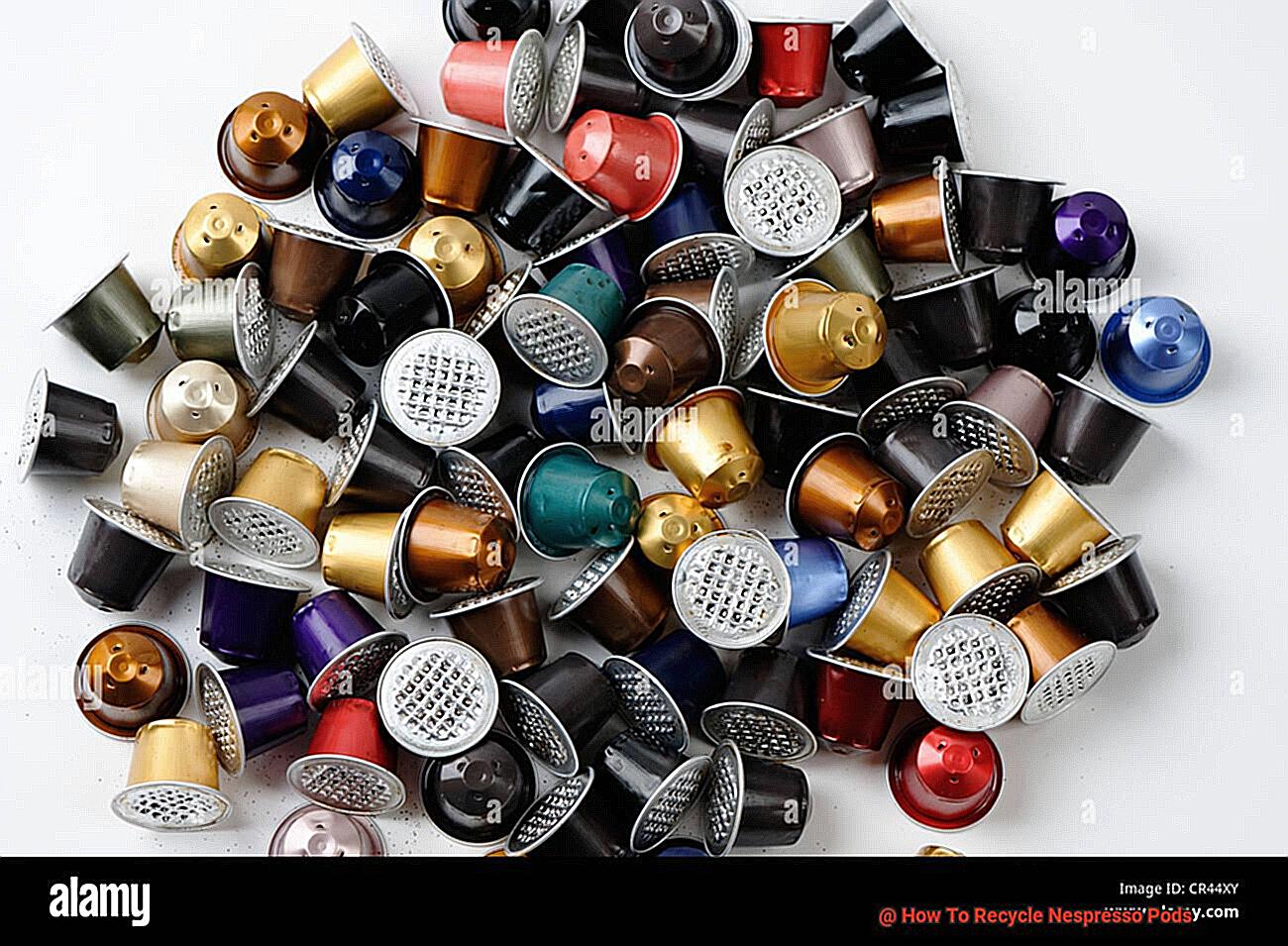
If you don’t have access to a collection point, don’t worry – you can still recycle your used pods at home.
To do this, first separate the aluminum from the coffee grounds by pressing down on the pod’s lever and using a spoon to scoop out the grounds.
Next, rinse the aluminum pod with water and let it air before adding it to your local recycling program. You can also use the coffee grounds in your garden or add them to your regular compost bin.
Nespresso’s Unique Recycling Process
After collecting all of the used pods, they are sent off to be recycled by Nespresso’s unique process where they separate the aluminum from the coffee grounds before melting down and reusing it or turning it into compost or biogas for agriculture use. It’s amazing what can be accomplished with something as small as an aluminum pod.
Collection Points
For those who want a more convenient way of recycling their used pods, there are collection points that can be found on their website or app which customers can drop off their bags at any time – no need to be concerned about shipping prices or anything else.
Third-Party Mail-In Services
Another option for recycling Nespresso pods is through mail-in services provided by third-party companies which will send you pre-paid bags once they receive them, separating and recycling them accordingly – however, make sure you do research on these companies first as some may not have sustainable practices when it comes to recycling aluminum pods.
Requesting a Recycling Bag from Nespresso
Make a positive impact on the environment today by recycling your Nespresso pods.
All you need to do is request a free recycling bag from Nespresso, and you’ll be well on your way. Whether you visit their website or contact customer service, they’ll send you a prepaid postage bag that can be used multiple times.
Once you have your recycling bag, simply fill it up with your used pods. Make sure to empty any leftover coffee grounds before placing them inside to prevent contamination of the process.
Recycling Nespresso Pods at Home
All you need is your Nespresso pods, a cape, and a commitment to help reduce waste. Recycling Nespresso pods at home is an easy process that can have a huge impact on the environment.
Start by separating the components: the coffee grounds, the aluminum capsule, and the lid. First, remove the lid from the aluminum capsule either by twisting it off or using a spoon to get underneath and gently pry it off.
Then, discard the coffee grounds in your compost bin or garden. Rinse the aluminum capsule with soap and water to remove any remaining coffee residue before letting it dry completely.
To recycle the aluminum capsule, contact your local recycling center or check Nespresso’s website for their own recycling program. In several countries including the United States, they offer free recycling bags that can be mailed back to them.
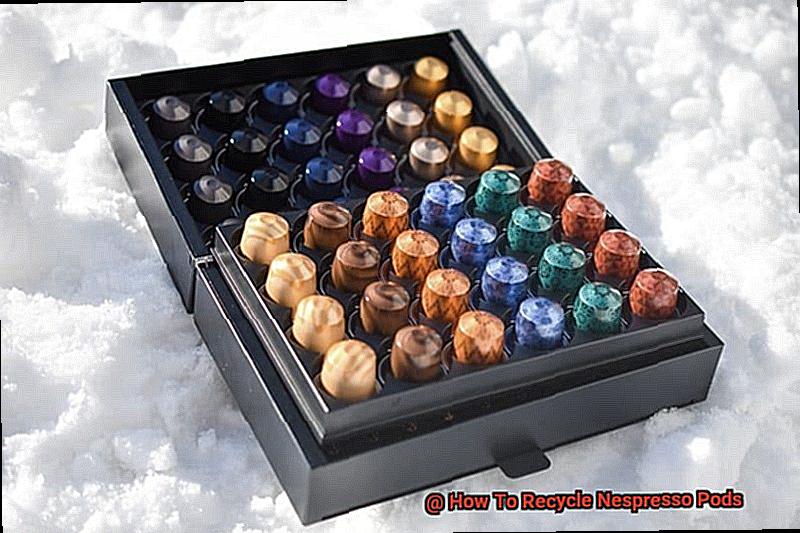
Step 1: Separating the Aluminum and Coffee Grounds
Then let’s get started with recycling your Nespresso pods.
The first step is to separate the aluminum and coffee grounds. To do this, open the Nespresso pod by removing the foil lid and tossing it into the trash.
Empty all of the used coffee grounds into a compost bin or garbage can. Rinse the pod under hot water to remove any residue.
Using scissors, carefully cut around the top of the pod to separate the aluminum from the plastic bottom. Clean each piece under water to ensure that all coffee grounds or residue have been removed.
The good news is that Nespresso now offers a convenient recycling program where customers can send back their used capsules for recycling – both aluminum and plastic components included.
Step 2: Rinsing and Drying the Aluminum Pod
Recycling Nespresso pods is not only good for the environment, but it’s also a great way to have fun.
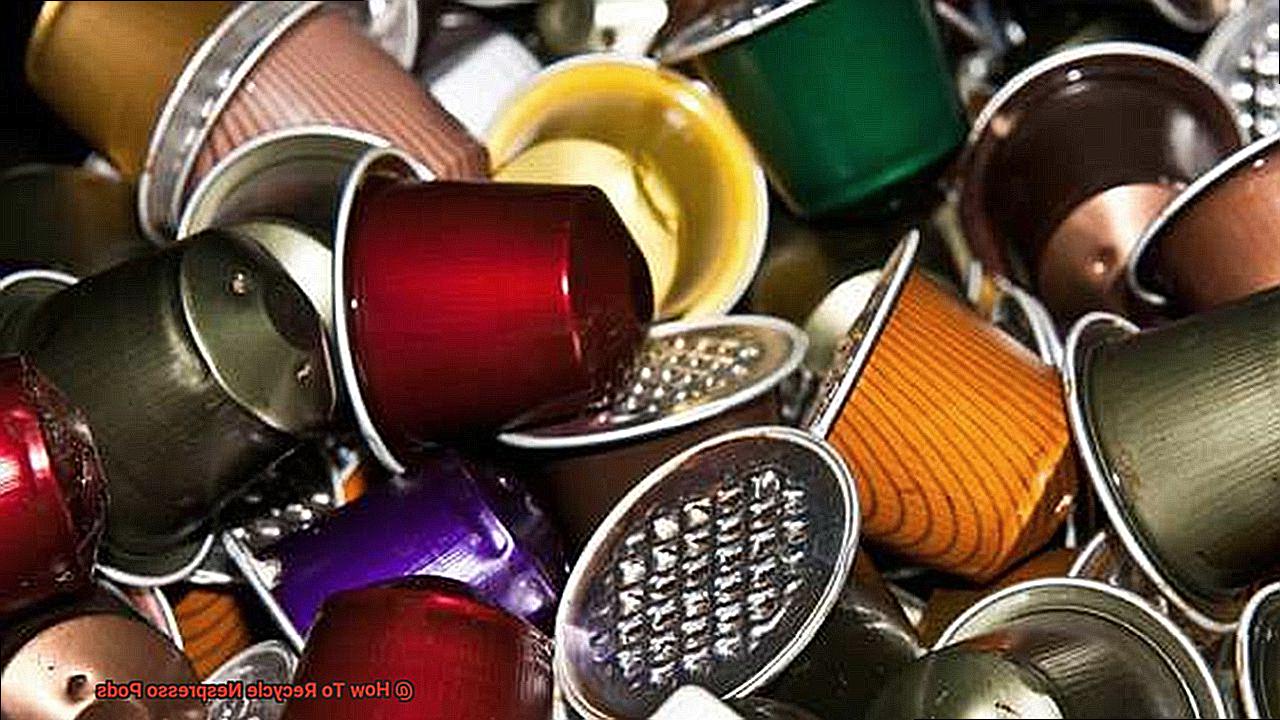
Step 2 of this process requires rinsing and drying the aluminum pod. This is a crucial step in the recycling process because it ensures that no coffee or milk residues are left behind, which could lead to contamination of the recycling process.
To begin, remove the used aluminum pod and let it cool completely. Then, take out the spent coffee grounds and place them in your compost bin.
After that, rinse off the pod with water to make sure that any possible traces of coffee or milk residues are eliminated. Place the pod upside down on a paper towel or cloth to let it drain before drying.
Drying is just as important as rinsing in order to avoid contamination of the recycling process. To dry your aluminum pod, lay it upside down on a clean surface such as a paper towel or drying rack and let it air dry completely.
If you want to speed up this process, use a clean cloth to wipe off excess moisture from the pod before tossing it into the recycling bin.
Step 3: Recycling the Aluminum Pod Locally
Recycling Nespresso pods is essential to protecting the environment, and step 3 focuses on properly recycling the aluminum pod locally.
To do this, you must first separate the aluminum from the coffee grounds by discarding the used grounds into the compost bin and removing the aluminum pod from your Nespresso machine. If you have a manual machine, carefully empty out the used capsule and separate the aluminum foil from the plastic pod.
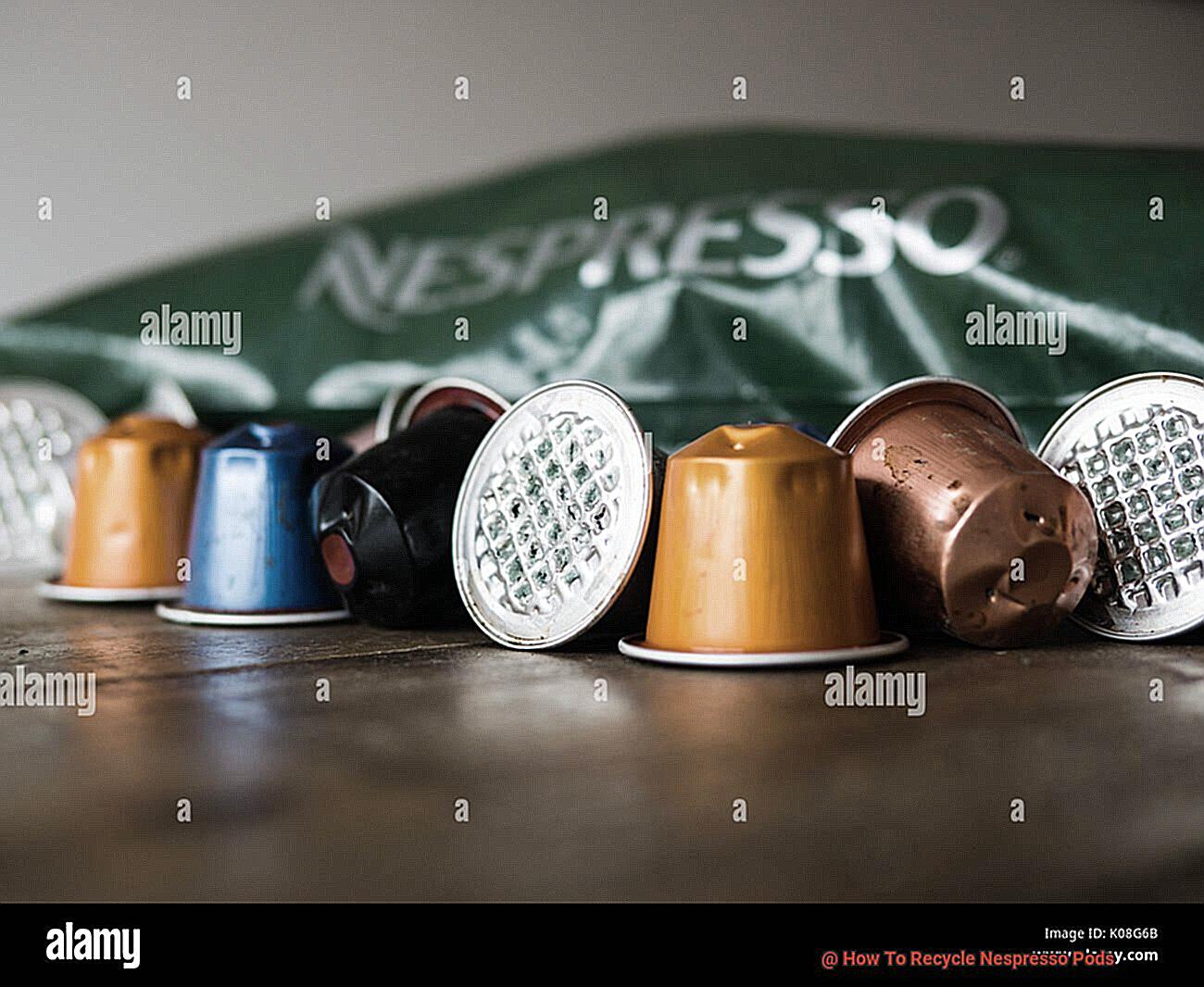
In newer machines, this process is automated with pods dispensed into a container that separates them for you. Once separated, check with your local recycling program to see if they accept aluminum pods.
If not, look into local scrap metal yards or specialty recycling centers for proper disposal. It’s important to note that even if your local recycling program accepts aluminum pods, they should never be placed in a regular recycling bin as they can easily get crushed and damaged.
Instead, collect them in a separate bag or container and bring them directly to the recycling center.
What To Do With Used Coffee Grounds
“Recycling Nespresso Pods”: Doing your part for the environment has never been easier. With Nespresso’s recycling program, you can simply drop off your used pods at any Nespresso boutique or partner location. Or if you don’t live near one of these stores, you can order a pre-paid shipping bag to send in your used pods. It’s a fast and efficient way to recycle and do your part for the planet.
Recycling At Home
If you don’t have access to a Nespresso boutique or partner location, don’t worry. You can still recycle your used coffee pods at home. All it takes is separating the aluminum from the coffee grounds.
Once that’s done, rinse the aluminum pod and recycle it in your local recycling program. As for the coffee grounds, add them to your regular compost pile or use them as compost on their own.
Fertilizing Plants
The use of coffee grounds is actually quite beneficial to plants. They are high in nitrogen, phosphorus, and potassium – all essential nutrients for plant growth. So why not use those used coffee grounds to fertilize your houseplants or gardens? To give plants a boost of nutrition, simply sprinkle the grounds around their base or mix them into soil.
Making Natural Insect Repellent
Coffee grounds can also be used as a natural insect repellent. Sprinkle some around gardens or outdoor seating areas to discourage pests like ants and slugs from destroying them. Plus, it smells great. This is an effective way to keep bugs away without resorting to harsh chemicals.
DIY Beauty Treatments
They’re actually great for DIY beauty care products such as facial scrubs, body scrubs, and hair masks. The grounds promote exfoliation and help reduce the appearance of cellulite while still leaving skin soft and smooth.
jtJJgX7MXnM” >
Conclusion
Recycling Nespresso pods is an easy way to make a positive impact on the environment and ensure a more sustainable future.
Plus, you can even use the coffee grounds in your garden or add them to your compost can.
